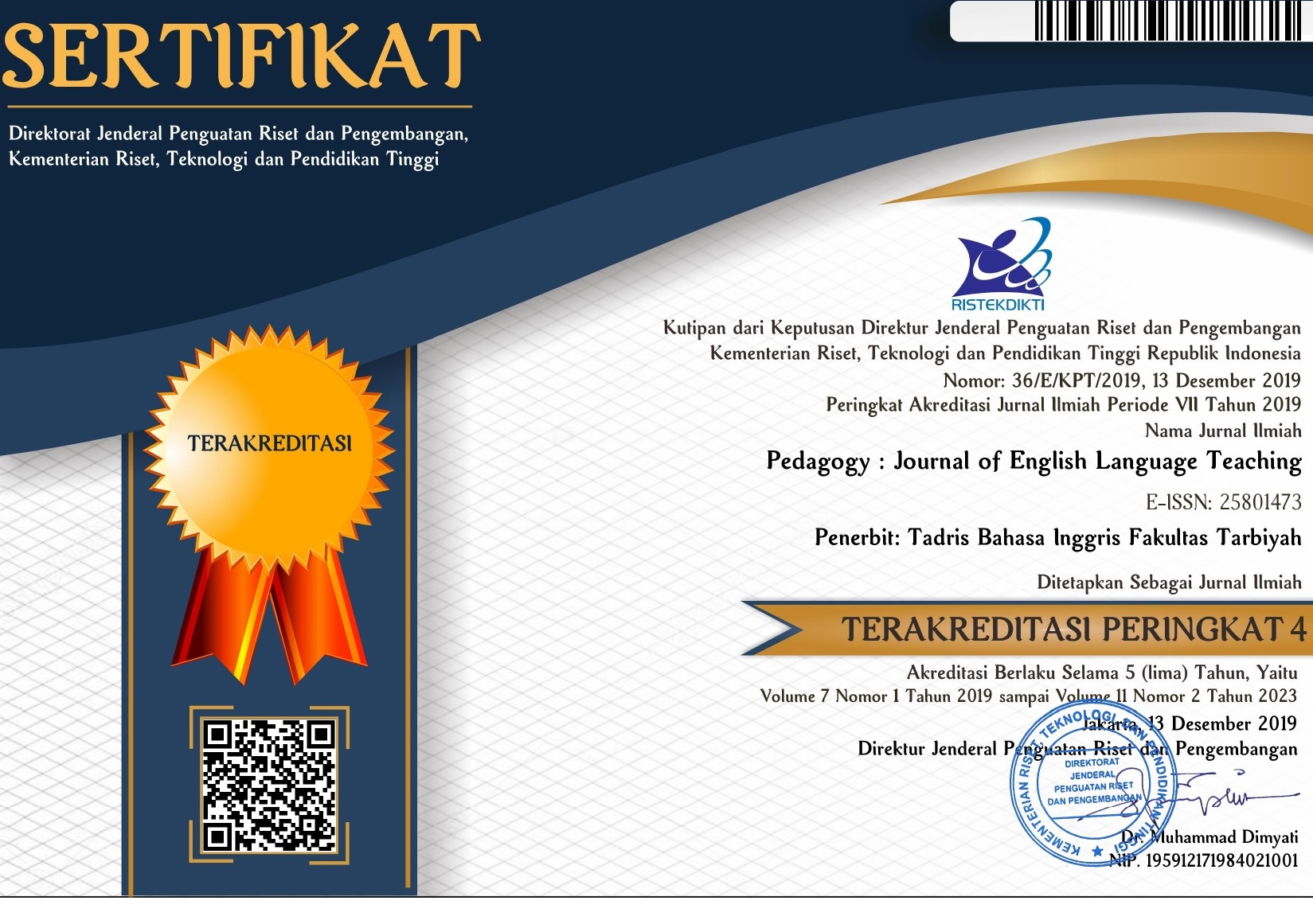Investigating the Implementation of IMRaD Structure in Abstracts of Undergraduate Students' Theses
DOI:
https://doi.org/10.32332/joelt.v11i2.7144Keywords:
Abstract, Undergraduate Thesis, IMRaD structureAbstract
The IMRaD (Introduction, Methods, Results, and Discussion) structure is a crucial framework for organizing information in abstract writing, enabling clear and effective communication of research findings. Hence, this research aims to analyze the adherence of undergraduate students to the IMRaD structure in their thesis abstracts. The study focuses on students who graduated from a private university in 2019. A sample of 77 from 326 thesis abstracts was selected from the population using the simple random sampling technique. Data collection involved a document review technique. The result shows that among the 77 students, all abstracts included the Introduction section, indicating a high level of adherence. However, the Method and Results sections were found in the abstracts of only 70 students, suggesting a relatively lower compliance rate. Surprisingly, the Discussion section was present in the abstracts of only 31 students, representing the lowest adherence to the IMRaD structure. This research reveals a need for interventions to enhance undergraduate students' understanding and implementation of the IMRaD structure in their thesis abstracts. Therefore, lecturers and institutions should provide guidance and support to improve students' adherence to this important academic writing convention. By enhancing students' proficiency in applying the IMRaD structure, their thesis abstracts can become more effective and aligned with scholarly standards.
















